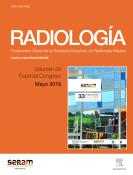0 - From neurolocalisationism to brain plasticity
University of Radiology, Antwerp University Hospital, Amberes, Bélgica.
Objetivos docentes: .The human brain remains one of nature’s great mysteries, and has sometimes been called science’s “final frontier”. This greyish lump with a weight of 1,5 kg contains some 85 to 100 billion neurons, each of which are connected to thousands of other nerve cells in a staggeringly complex network. In the 19th century, and well into the 20th century, the brain was perceived as a three-dimensional landscape, in which brain functions were confined to certain fixed locations, e.g. motor and sensory cortex, visual cortex, auditory cortex, and so on. This concept of “neurolocalisationism” was perfectly in line with the 19th and 20th century philosophy that there should be “a place for everything, and everything should be in its place”. Neurologists such as Paul Broca (France) and Carl Wernicke (Germany) correlated the clinical symptom of aphasia to a cerebral infarct in particular regions of the brain, which they identified as the motor and sensory speech areas. The concept of neurlocalisationism was reinforced by evidence provided by neuropathologists such as Korbinian Brodman, who crafted a map representing all the brain areas with numbers, based on the cytoarchitectural organization of neurons in the cerebral cortex on the Nissl stain, with each region (presumably) corresponding to certain functions. In the 20th century, this theory received further support from a Canadian neurosurgeon, Wilder Penfield, who applied electrical stimulation to the surface of the brain, to map out different parts of the cerebral cortex, including the speech areas and motor cortex. Other investigators, such as David Hubel & Torsten Wiesel, used light patterns to map the visual cortex. In fact, neurolocalisationism represents the search to correlate neurological function with topographical locations in the brain (even though there remain vast territories of unknown function, the so-called non-eloquent brain areas). The theory largely ignores the fact that the brain has a capacity for repair, and change, even after injury.
Discusión: In the late 20th and early 21st century, mainly thanks to the arrival of advanced MRI techniques for image acquisition and data analysis (fMRI, DWI, DTI, VBM), research has shown that the brain can modify its structure and function in response to changing circumstances (e.g. learning, memory, hormones, and other influences). This adaptation is called neuroplasticity, a term which refers to the ability of the brain to change, to adapt and to reorganize neural pathways, as it needs. The process of neuroplasticity occurs at different levels and different time scales. In response to injury, changes may be seen at cellular level, or on a larger scale (cortical remapping). Some processes may take months or years (influenced, for example, by physical therapy and training). It explains why, after a stroke, physical therapy and training can help patients to recover (part of) the function(s) they lost. The brain activates neurons and pathways to circumvent the injured parts. On the other hand, brain plasticity can also be observed in short time ranges (hours or days). For example, changes in brain volume and connectivity have been documented during the female menstrual cycle, and have been linked to behavioral changes). Neuroplasticity is modulated by a large number of variables, including hormones, activity and stimulation. Neuroimaging studies can reveal neuroplasticity by showing structural changes (e.g. volume changes in grey matter) or rewiring of white matter (e.g. changes in mean diffusivity or fractional anisotropy).






 Cartas de presentación
Cartas de presentación

